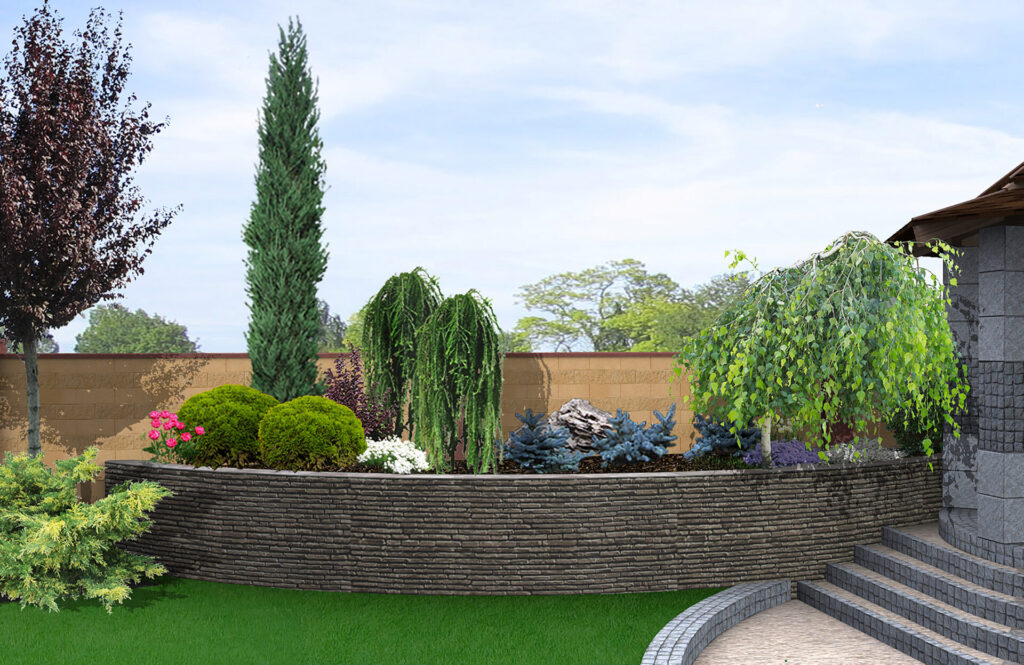When considering backyard landscaping ideas, installing a retaining wall in your yard can be a great way to enhance the aesthetic appeal and functional use of your outdoor space. However, it's important to carefully plan and execute the installation process to ensure that the wall is built correctly and in compliance with local regulations. If you’re concerned that your yard might need this kind of feature, there’s no reason to worry. Get in contact with us and get a custom quote today.
Do it right:
- Determining the right purpose:
Determine the purpose of the retaining wall, such as to hold back soil or create raised garden beds
- Get the correct materials:
Choose the right materials for the wall, such as concrete, stone, or wood. Each has its own pros and cons in terms of cost, durability, and aesthetics
- Build on the right slope:
Assess the slope of the land where the wall will be built, and determine the size and height of the wall needed to hold back the soil
- Provide adequate drainage:
Make sure to include proper drainage in the design of the wall to prevent water from building up and causing damage
- Get the right permits:
Check with local building codes and regulations to determine if permits are required for the installation of a retaining wall
Common mistakes:
Trying to do it yourself and not hiring a professional
Building a retaining wall is a complex task that requires a certain level of knowledge, skill and experience. Attempting to build a retaining wall without professional guidance can lead to mistakes that can compromise the integrity of the wall and the safety of the surrounding area. Hiring a professional ensures that the wall is built correctly and in compliance with local regulations
Not allowing proper drainage
Drainage is a crucial aspect of retaining wall construction. Without proper drainage, water can build up behind the wall and cause damage. This can lead to cracking, settling, and even collapse of the wall. It's important to include drainage systems such as perforated pipe and gravel to ensure that water is directed away from the wall and the surrounding area
Picking the wrong materials
The type of material used for a retaining wall can greatly impact its durability, aesthetics, and overall effectiveness. Choosing the wrong materials can lead to problems such as rot, cracking, and erosion. It's important to choose the right materials that are appropriate for the specific location and purpose of the wall
Failing to get permits
Building a retaining wall requires a permit in many jurisdictions, and it's important to check with local building codes and regulations before beginning construction. Failure to obtain the necessary permits can result in fines and even the removal of the wall
Not doing the necessary maintenance
Retaining walls require regular maintenance to ensure their structural integrity and longevity. This includes regular inspections, cleaning, and repairs as needed. Neglecting maintenance can lead to serious problems such as cracks, settling, and collapse
Picking the wrong spot
The location of a retaining wall can greatly impact its effectiveness and stability. Factors such as soil type, slope, and drainage all need to be taken into consideration when designing and building a retaining wall. Ignoring these factors can lead to problems such as settling, cracking, and collapse
A retaining wall can be a beautiful and aesthetically pleasing addition to any landscape. That is especially true when they are designed and installed by a landscape contractor. It's advisable to consult a professional landscaper or contractor to ensure that the wall is built correctly and in compliance with local regulations. If you’re concerned that your yard might need this kind of feature, there’s no reason to worry. Get in contact with us and get a custom quote today.


